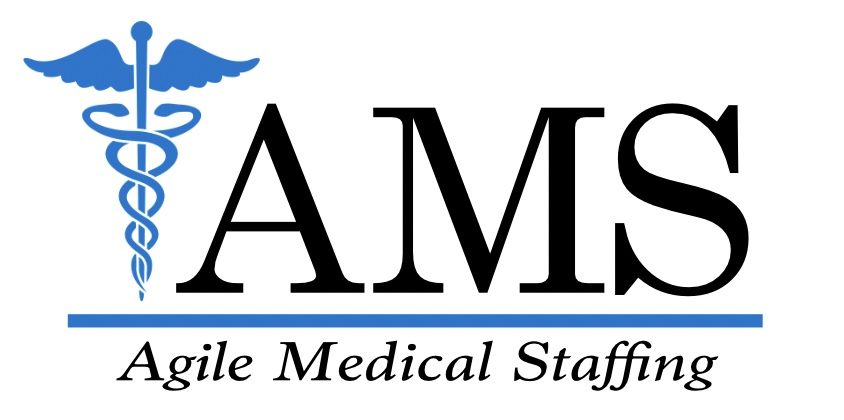When patient numbers start to rise suddenly, healthcare teams face a unique type of pressure. In a fast-paced environment, the ability to act quickly, stay organized, and keep patient care on track becomes even more important. High patient volume puts strain on both clinical and operational systems, often testing the limits of what a team can handle. Without a plan in place, staff burnout, longer wait times, and mistakes in care can quickly become a reality.
In Dallas, facilities often experience these disruptions during certain weeks of the year. Whether it’s due to seasonal illness, local events, or unpredictable surges, those spikes in demand don’t wait for anyone to catch up. That’s why having strategies in place for quick and efficient medical staffing is key to riding out the rush without sacrificing quality. Let’s look at when these periods tend to happen and how to get ready for them before they hit.
Recognizing Peak Periods
Before putting staffing solutions in place, it’s helpful to know when demand is likely to increase. Dallas healthcare facilities often see spikes tied to certain times of year. Flu season is one, but other less obvious periods also put extra stress on staff. For example, right after major holiday breaks, people are more likely to return seeking care they may have been putting off. Summertime can also bring increased ER visits due to accidents or heat-related illness. Even local events like festivals or conferences can create unusual patterns in healthcare demand depending on their size and scope.
It’s not always predictable, though. Natural disasters, viral illness outbreaks, or sudden community changes can create a ripple effect that sends more patients through the doors than expected. In hospitals or clinics already short on staff, even a small change in demand can be tough to manage.
Some of the more common causes of high patient volume in Dallas include:
– Seasonal surges such as flu in winter or allergy issues in spring
– Local school year schedules leading to pediatric spikes
– Community events causing injury or illness-related visits
– Patients delaying care and returning all at once
– Population changes or traveling visitors increasing overall volume
By watching for early signs like full appointment bookings or rising ER wait times, managers can take faster action. Preparation ahead of these known or suspected peaks can limit the chances of being caught short-handed. Not only does this help avoid service delays, but it also keeps the workload more manageable for current staff.
Strategies For Urgent Staffing
Once a potential surge is on the radar, the next step is figuring out how to meet it head-on. There’s often not much time to act when patients start lining up, which is why facilities benefit most from putting staffing steps in place far in advance. This way, any plan can be activated quickly when needed. Here are a few strategies that help.
1. Keep a reserve pool: Having access to temporary or per diem staff can make a big difference. Make sure their certifications and backgrounds are already verified so they’re ready to work when the call comes in.
2. Cross-train current staff: If a nurse can handle both general and specialized care, or if admin staff can manage intake and patient support, there’s more flexibility during staff gaps.
3. Rotate staff fairly: Avoid staff burnout by assigning critical shifts in a balanced way and offering recovery time after intense periods.
4. Use healthcare facility staffing services: These partnerships can speed up turnaround times for filling shifts, which is useful when needs pop up with short notice.
5. Communicate early and often: Let potential float staff or on-call workers know when volume starts increasing. This heads-up allows them to plan for availability.
Urgent staffing shouldn’t mean scrambling. With even a basic plan, a facility can stay grounded during busy times without overloading the core team. This doesn’t just reduce stress. It protects patient care too.
Ensuring Staff Efficiency
When workloads increase, keeping staff motivated and sharp becomes even more important. It’s easy for fatigue to creep in when patient demand spikes, especially if it lasts more than a few days. This is where scheduling, teamwork, and custom support systems make a difference. Facilities that stay on top of these issues tend to move through high-pressure periods with fewer setbacks.
Flexible scheduling plays a big part. When nurses and techs know their shifts are organized with recovery time in mind, they’re more likely to stay focused and avoid burnout. Shorter but more frequent breaks can also help during packed days. Some teams go a step further by offering debrief sessions or regular check-ins during a crisis window. These casual moments give the team a space to reset.
Here are some easy ways to support staff during peak times:
– Rotate roles when possible to reduce repetitive tasks
– Pair new hires with experienced team members during busy shifts
– Adjust non-critical duties like paperwork to lighter periods
– Provide encouragement and celebrate wins, even small ones
– Give team members a say in scheduling when feasible
Everyone works better when they feel supported. During hectic periods, a little bit of care for the care team goes a long way. When the environment stays positive and smooth, people notice and it can make all the difference in how patients experience care too.
Benefits Of A Robust Staffing Plan
When a healthcare facility has the right staffing structure in place, the entire operation flows better. This becomes extra clear when patient numbers climb. Strong plans allow teams to adjust quickly, stay organized, and avoid last-minute scrambling. That means quicker room turnarounds, smoother admissions, and fewer mistakes due to exhaustion or stress.
Patients benefit from this kind of setup in real time. When the staff isn’t stretched thin, each person receives more focused care. Wait times stay more reasonable, which helps reduce complaints and improves the overall feeling of the visit. People remember how they’re treated, especially when they’re already stressed.
For facility leaders, strong staffing also has long-term benefits. Controlled scheduling, less turnover, and smoother daily flow can have a big impact over time. Things like staff retention, morale, and patient reviews often improve when the plan is consistent and reactive. Even when unexpected situations pop up, the operation doesn’t feel chaotic.
One example: During a summer heatwave in Dallas, a local clinic prepped early by activating their float pool three days before patient numbers started to spike. Because shifts were covered, and extra hydration and cooling gear were provided for staff, the team kept their focus during long shifts. Patients were seen faster, and workers left each shift feeling supported. It’s simple moves like that which show how a little planning goes a long way.
Ensuring Patient-Centered Care During Rush Periods
Even under pressure, patient care has to remain the priority. Busy schedules and full waiting rooms can create stress, but they shouldn’t lower the quality of care. That’s where support staff and streamlined processes come in.
Support team members like front desk coordinators, transport aides, and cleaning crews can take real pressure off clinical staff. When responsibilities like room turnovers, direction giving, or restocking are handled efficiently, the nurses and providers focus more fully on care delivery. Small adjustments in shared workloads help maintain the feeling that no one’s stretched too thin.
During chaotic periods:
– Quick team huddles make sure everyone is on the same page
– Clearly updated whiteboards help avoid miscommunication
– Scheduling tech improves visibility into staff availability
– Triage protocols keep the most urgent cases moving first
Being organized is the key, but so is interaction. Reassuring patients with updates or check-ins while they wait helps maintain calm. If delays happen, acknowledgment and transparency go a long way. When patients feel seen and respected, even in a rush, they’re more understanding about wait times and delays.
Keeping Dallas Facilities Ready for What’s Next
Dallas healthcare facilities are often right at the center of changing population dynamics and seasonal patient surges. This makes having a strong, flexible staffing plan more than just a good idea. The ability to tap into local resources for faster shift coverage, especially during peak periods, gives facilities what they need to keep up when it matters most.
Using existing networks across Dallas and building responsive schedules that reflect real-time needs helps staff stay ready to act. Whether it’s an uptick in ER visits after a large city event or a growing need for pediatric care once school resumes, it pays to notice the patterns early. When facilities flag these yearly spikes and plan accordingly, they can deploy team members faster and more confidently.
It also helps to have a few contacts on standby. People who know the local hospitals or community demands and can fill in quickly provide stability. Trusting those connections builds reliability and makes future surges easier to manage too. Even when surprises happen, the right support at the right time keeps things moving smoothly. That confidence carries forward and helps shape a better experience for both the care team and the patients long after the rush is over.
Developing a strategy for healthcare facility staffing in Dallas can make all the difference during peak periods. An adaptable approach not only eases pressure on your team but also improves patient satisfaction. Agile Medical Staffing is committed to providing flexible, highly qualified professionals to support your facility when demand surges. Reach out today to learn how we can help keep your operations running smoothly and your care team supported.







